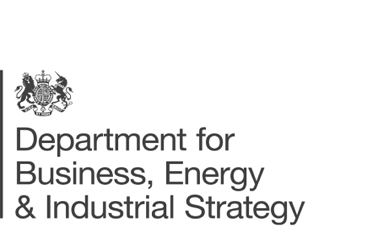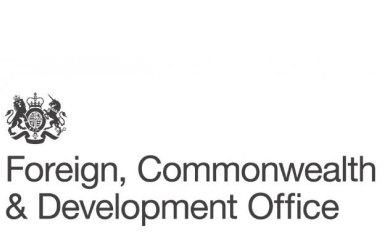Our Information Collection: European update

The Global BIM Network has significantly expanded its online resources on BIM processes and practices in Europe. A recent review shows the Network’s Information Collection now contains more than 250 European artefacts, sharing knowledge from 35 countries in the region. Together they represent around half of all the resources in the Collection. This is a marked increase since a February 2022 summary of European resources recorded 89 artefacts spanning 15 countries.
The Information Collection is the Network’s fully searchable digital knowledge base. It is a rich source of shared information and inspiration for stakeholders engaged at all levels in the global built environment.
Recent developments from the EU BIM Task Group which brings together public sector efforts into a common and aligned European approach include a series of workshops on Open BIM, Common Data Environments (CDE) and practical organisational implementation strategy.
Similarly, the Collection provides access to regional BIM standardization activities through a link to the European Committee for Standardization (CEN) Technical Committee 442. This details work completed and published to date and the current workplan for upcoming developments.
At the country level, recent developments include:
- Approval by Spain’s Council of Ministers for PlanBIM for implementing building information modelling in public procurement. This enables the gradual introduction of mandatory BIM requirements from 2024.
- In Italy, an updated Public Contracts code (Legislative Decree no. 36) is introducing new clauses for digital information management.
- Hungary has published a Draft Public Construction Investment Law including BIM requirements.
- In Ireland, the Build Digital Project has been launched in support of Project Ireland 2040. The Build Digital Project aims to transform the Irish construction and built environment sectors.
- Bulgaria’s National Strategy for Digital Transformation of the Construction Sector 2030 highlights the need for a green, digital and sustainable construction ecosystem.
The Global BIM Network’s Information Collection enables individuals and organizations to gain a better view of BIM processes and practices around the world. Among other parameters, filters enable searches by region and country. More European resources will be published in coming months.
Contact the Global BIM Network to add your resources to this growing knowledge base.
Scaling the change and communicating progress

This is the final in a series of articles on the five states of digital transformation.
Scaling can be one of the longest and most complex states in the digital transformation journey. Its purpose is to grow gradual maturity across the entire industry and communicate the change required in an easy-to-understand way to support adoption.
Once scaling has achieved its initial goals, it can follow a process of continuous improvement, potentially leading to future programmes, cycling back through the justifying, mobilising, developing and implementing states.
These messages, and more, are outlined in the Global BIM Network’s recently-released Public Sector Construction Digital Transformation Playbook which provides tailored links to the Network’s digital knowledge base, the Information Collection.
Scaling spans national, organizational and project levels, necessitating adaptability to diverse contexts. Unique challenges arise, including the need for scalable capacity building and communication for thousands of stakeholders. Policymaker leadership is essential, with incentives and regulations to support adoption. Peer groups and communities emerge to support stakeholders, ensuring the change becomes business as usual, driving maturity and unlocking value.
Key challenges for personas
During scaling, three user types, or personas, play important roles.
Policy / strategy personas continue to provide leadership and direction, albeit at a much-reduced capacity. They ensure the overarching strategy for the digital transformation stays aligned with government objectives. They may introduce regulatory measures to drive wider adoption and scale up again to look at new initiatives as the programme focuses on continuous improvement.
Transformation programme personas support capacity building. This includes developing scalable training resources to accommodate the growing number of stakeholders. Communication is crucial. These personas also track progress, gather case studies, and adapt solutions for different sectors and contexts. They play a central role in supporting communities of practice.
Procurer / owner / operator personas continue to provide feedback and fine-tune the transformation’s outputs. They engage in capacity building and implementation, ensuring their teams are prepared for the new way of working. They also adapt and align their practices with emerging industry standards. As the transformation becomes business as usual, they take on a larger role in supporting industry-led change.
Seven considerations
The following considerations are addressed in the scaling state:
- Broad, scalable communications and change management;
- Application of all transformation states for each implementing sector / organization / programme;
- Adapting the solution for varying sectors and conditions;
- Enablement of industry, academia and communities of practice to support capacity building;
- Implications beyond BIM (problems and opportunities);
- Transitioning away from legacy methods; and
- Increasing maturity of digital requirements and solutions.
Typical outputs
In the scaling state, typical outputs are:
Read the Public Sector Construction Digital Transformation Playbook
Send us your feedback on the Playbook
Read the other articles in this series on the states of digital transformation: justifying, mobilising, developing, implementing.
Implementing the change in practice onto projects

This is the fourth in a series of articles on the five states of digital transformation.
What are the key considerations when implementing a digital transformation programme? Firstly, it’s important to understand that implementing is just one of a series of five states outlined in the Global BIM Network’s new Public Sector Construction Digital Transformation Playbook. This online publication explains how the states of justifying, mobilising, developing, implementing and scaling together build successful transformation programmes.
The implementing phase is vital as it signals the shift from planning and setup to practical application in a digital transformation programme. It tests the collaborative framework and guidance already developed and begins building capacity within project teams and the wider industry.
It also introduces many new stakeholders and requires effective change management and communication. Successful implementation showcases quick wins, builds confidence and promotes best practice across projects. It allows for real-world feedback to further refine the framework if needed and serves as a critical bridge between theory and practice, setting the stage for subsequent scaling.
Key challenges for personas
Three user types, or personas, play different roles in the implementing state.
The policy / strategy persona is typically less involved and will focus on oversight and governance. They might be involved in reporting back on early successes and achievements against the programme’s vision. They guide the programme through the practical implementation phase, providing public leadership.
The transformation programme persona steps up to become the driving force at this time. They are responsible for overseeing the practical rollout of the digital transformation programme. This includes selecting suitable pilot projects, building capacity within project teams, and refining the collaborative framework based on practical experiences.
The procurer / owner / operator persona is essential in the implementation phase as they are the ones who will benefit from and deliver the outputs of the transformation. They start to engage more widely in the programme, testing and implementing the changes on the pilot projects. They provide valuable feedback to the transformation programme team, which informs future decisions and helps in the development of practical project-specific guidance.
Six considerations
The following key considerations may be addressed in the implementing state:
- Targeted change management;
- Revisit relevant principles of justifying, mobilising and developing for specific organizations / projects;
- Test an implementation model which can be refined for scaling;
- Alignment of public sector, industry and academia;
- Implementation strategy and planning; and
- Defining criteria and selecting pilot organizations and projects.
Typical outputs
The Playbook links to real-world examples of typical outputs in the implementing state. These, and many more, are contained in the Network’s digital knowledge base, the Information Collection.
CALLS TO ACTION
Read the Public Sector Construction Digital Transformation Playbook
Send us your feedback on the Playbook
Look out for the next in our series of articles on the five transformational states
Developing the legal, commercial and technical framework for a digital transformation programme

This is the third in a series of articles on the five states of digital transformation.
“Developing” is one of five important states identified in the Global BIM Network’s newly released Playbook. The Public Sector Construction Digital Transformation Playbook explains how the states of justifying, mobilising, developing, implementing and scaling form the journey of a successful digital transformation programmes.
Developing ensures that the new way of working introduced by the transformation programme is clearly defined and communicated. It involves creating a collaborative framework of standards and guidance which defines the requirements for a standardized approach to digital transformation. Engagement and two-way communication between the programme team, key stakeholders and industry are essential. This helps ensure the framework incorporates existing best practice, international standards and new digitally enabled processes.
Key challenges for personas
The Playbook outlines the role of three user types, or personas, in the developing state.
The policy / strategy persona usually provides leadership and governance. This might include providing the authority to convene appropriate stakeholders to support the development of the collaborative framework and call for the action of enabling organizations, such as national standards bodies. This persona might also be responsible for implementing policy, legislative and regulatory interventions in preparation for the gradual introduction of change through implementing and scaling.
Within developing, the transformation programme persona usually undertakes most of the actions under the leadership and governance of the policy / strategy persona. The elements of the collaborative framework are developed, aligned with defined workstreams and core team roles. This framework provides the requirements and guidance to support the new way of working resulting from the transformation programme. Various stakeholder groups are often involved in developing the framework. This helps capture diverse perspectives and areas of expertise, and builds commitment to the change.
The procurer / owner / operator is mainly concerned with implementing change. They may represent stakeholder groups, receiving communications from the other personas and providing input on the current state, collaborative framework scope and implementation needs. Specific procurers / owners / operators may also be selected as early adopters of the transformation within the implementing state.
Five considerations
The following considerations are addressed in the developing state:
- Understanding the current state;
- Balancing the adoption of existing approaches with local needs;
- Defining an achievable maturity level that increases over time;
- Engaging stakeholders; and
- Conveying a complex solution with simple ideas and messaging.
Typical outputs
In the developing state, typical outputs are:
- A collaborative framework
- Events and communications
Examples of such outputs and many other resources can be accessed via the Global BIM Network’s online Information Collection.
Read the Public Sector Construction Digital Transformation Playbook
Send us your feedback on the Playbook
Look out for the next in our series of articles on the five transformational states.
Mobilising your transformation programme to accelerate change

This is the second in a series of articles on the five states of digital transformation.
When it comes to mobilising a digital transformation programme, what are the key challenges for each type of user? What are the core considerations and expected outputs? The Global BIM Network has recently launched the Public Sector Construction Digital Transformation Playbook in which these, and many other, questions are answered. The Playbook details how programmes transition through the states of justifying, mobilising , developing, implementing and scaling to successfully achieve their outcomes.
Mobilising builds on earlier actions taken when justifying a transformation programme. In the mobilising state, large and diverse groups of stakeholders must enact a series of complex actions. For many national public sector-led programmes this may extend over 5 to 10 years.
Technical challenges such as decisions around data formats and classification, software systems and interoperability are also addressed. The success of the programme will depend upon strong and clear public sector leadership and change management. This often requires engagement, encouragement, inclusion and influence to build agreement on the programme’s scope, activities, deliverables and outcomes, and the role of each stakeholder group.
Key challenges for personas
The Playbook outlines the role of policy makers, transformation team members, and owners / procurers / operators in each state of a successful transformation journey. In the mobilising state, these three user types, or personas, fulfil the following roles.
The policy / strategy persona usually initiates and owns the overall programme. Often the sponsor or lead, they specify outcomes, confirm resources, identify constraints and appoint people to initial transformation programme roles. They may also be responsible for implementing policy, legislative and regulatory interventions.
The transformation programme persona implements most of the actions in the mobilising state. Typically, initial transformation programme roles are appointed. Some of these individuals may have been involved already in supporting information gathering and justifying the programme.
The procurer / owner / operator is mainly concerned with implementing change. They are likely to be engaged as a representative of stakeholder groups, receiving communications from the other personas, and giving input on the schedule, gradual implementation and prioritisation of actions.
Five considerations
In the mobilising state, the following considerations are addressed:
- Building the core transformation team;
- Clearly defining and organising the work;
- Establishing appropriate management and governance;
- Identifying and engaging with stakeholders; and
- Commencing external communications.
Typical outputs
Many countries, states and organizations share their work through the Global BIM Network’s online Information Collection. This includes summaries and links to many examples of the outputs from mobilising. Five typical outputs are:
Read the Public Sector Construction Digital Transformation Playbook
Send us your feedback on the Playbook
Look out for the next in our series of articles on the five transformational states
Justifying change and gaining stakeholder support

This is the first in a series of articles on the five states of digital transformation.
The newly launched Public Sector Construction Digital Transformation Playbook details five important states in a digital transformation journey. Published by the Global BIM Network, the Playbook explains how programmes transition through the states of justifying, mobilising , developing, implementing and scaling to successfully achieve their outcomes.
Richard Lane is the Network’s Knowledge & Capacity Building Lead. He says that while it is helpful to learn about the five states in this order, programmes do not always follow a linear sequence. “The states describe a set of circumstances rather than a timeline.”
Justifying is when desired changes are identified, and stakeholder support is gained. It builds the case for change, aligns the objectives of the programme with wider priorities and enables the programme to proceed. It is typically the first part of a transformation journey, although it may overlap with mobilising a programme. Similarly, it may be necessary to revisit the justifying state at several points throughout a programme.
This article looks at the key challenges each of three user types, or personas, may face in the justifying state. It also outlines five key considerations and three typical outputs.
Key challenges for personas
The Playbook can help multiple personas, whether they are a policy maker, part of a transformation team, or an owner, procurer or operator.
A policy or strategy persona usually drives the justifying state, providing initial instruction and leadership, and publishing the outputs. They might also identify and recruit a leader of the transformation team to transition into the mobilising state. If justifying is being revisited during the life of the programme, a policy maker may request the revisit and assess the case for continued investment.
Usually, the transformation programme persona would not be formed at the early stages of justifying. However, they would be a lot more active if justifying is being revisited as part of an in-progress transformation programme.
A procurer, owner or operator might influence the policy / strategy persona to initiate a transformation programme. They could also represent the needs of the ‘problem owner’ and / or provide information on the current state to establish baseline measures and identify priority challenges and opportunities.
Five considerations
In the justifying state, the following considerations are addressed:
- Establishing a collective understanding of what BIM is and why it is of value;
- Understanding the challenges and opportunities;
- Defining the strategic principles for the programme;
- Securing the authority and resources to commence or continue a programme; and
- Establishing and maintaining leadership.
Typical outputs
The Playbook links to real world examples from across the globe which can be downloaded from the Network’s digital knowledge base, the Information Collection. Three typical outputs in the justifying state are:
- External / peer landscape reviews
- Formal approval to commence or continue
- Policy / public commitment
Read the Public Sector Construction Digital Transformation Playbook
Send us your feedback on the Playbook
Look out for the next in our series of articles on the five transformational states
Getting the most from the Public Sector Construction Digital Transformation Playbook

Imagine a policy maker who attends a conference and hears about BIM for the first time. They turn to the Global BIM Network’s website and find a wealth of information. So, where do they start?
The Network’s newly launched Public Sector Construction Digital Transformation Playbook provides a gateway to all the information relevant to each set of circumstances.
The Playbook helps each person identify the state of progress of the digital transformation project or programme that they’re involved in and their role based on the three personas profiles.
Users can then access directly practical examples in the Network’s Information Collection that relate to their work and even create their own bespoke version of the Playbook for future reference via the free MyPlaybook function.
It all starts with reading through the introductory overviews in the Playbook and understanding which more detailed sections resonate.
The Playbook organises digital transformation into five states. These help to pinpoint what to focus on at each stage. The five states are:
• Justifying the change and gaining stakeholder support;
• Mobilising the transformation programme to accelerate change;
• Developing the legal, commercial and technical framework;
• Implementing the change in practice onto projects; and
• Scaling the change and communicating progress.
The Playbook also identifies three groups of stakeholders, or personas, with their own needs, motivations and challenges in digital construction implementation. These personas are:
- Policy and strategy;
- Transformation programme; and
- Owner/procurer/operator.
As a policy and strategy persona, the policy maker may, for example, be involved in the justifying stage of a transformation journey. This may involve raising awareness of the need for change and its benefits, influencing stakeholders to achieve buy-in, and building a coalition to support the change. Stakeholders build a business case to understand programme costs, anticipated returns on investment, resource requirements and the removal of programme obstacles.
The policy maker can click directly from the Playbook to all resources in the Information Collection related to justifying. They can then use the filters to fine-tune their search, identifying ideas of what to do next and practical examples of what other countries have done in similar circumstances.
The policy maker now has the knowledge, ideas and inspiration, based on experience from around the globe, to start building the justification for their own transformation program.
Read the Public Sector Construction Digital Transformation Playbook
Watch a video providing instructions on navigating the Playbook and using the MyPlaybook function is provided in the ‘Using the Playbook’ section.
Register for MyPlaybook
Send us your feedback on the Playbook
Submit a resource to be added to the Information Collection
Look out for our upcoming series of articles on each of the five transformational states
New Playbook provides valuable insights into global construction digital transformation

The Global BIM Network has officially launched the Public Sector Construction Digital Transformation Playbook, making it easier to find information, ideas and inspiration on construction digital transformation.
The Playbook is for anyone interested in accelerating and growing the benefits of BIM implementation and digital transformation of construction. It enables users to identify common, good practice by synthesizing experiences from across the world.
The Playbook complements, adds context to, and links directly to the Network’s Information Collection. This digital knowledge base of over 500 resources from over 65 countries includes articles, guidance and policy documents to facilitate the introduction of BIM. Both the Playbook and the Information Collection are free online resources.
The Playbook is primarily targeted at public sector and multi-lateral organizations and provides a rich resource for those who are interested in encouraging, supporting, defining and implementing transformation.
The private sector can also use the Playbook as many of the principles, methodologies and processes highlighted in the Playbook are applicable to organizations of any type.
The Playbook also offers academia an insight into some of the challenges and opportunities around public sector transformation programmes. Academia can use the Playbook to demonstrate a robust and tested approach to digital transformation which is scalable and adaptable to many different contexts around the world.
The experience can be personalised through the free MyPlaybook function which enables users to save their most useful sections from the Playbook for quick access later. Once registered, users can simply click on the Save button on any page of the Playbook to collate their own selected content.
Network Chair Adam Matthews described the Playbook as a “significant transition” for the Network when he announced the start of the Playbook’s development at the second annual General Assembly.
“The purpose of the Playbook is to make sense of all the information that we have collated. It will help people find what’s most relevant to them and support them on their digital transformation journey.”
Read the Public Sector Construction Digital Transformation Playbook
Register for MyPlaybook
Send us your feedback on the Playbook
Submit a resource to be added to the Information Collection
Back to basics: The Four Pillars – Capability and Capacity Development

This is the latest in a new series of blogs looking at the fundamentals of building information modelling and the role of the Global BIM Network.
In this final blog on the four pillars of a public led BIM programme, we consider capability and capacity development. Together, these four pillars describe the common strategic areas for success.
• public leadership;
• communication and communities;
• collaborative framework; and
• capability and capacity development.
Stakeholders can employ three specific actions to develop capability and capacity.
ONE Run pilot projects and promote training to encourage early successes. Pilot projects are an important mechanism for testing and demonstrating how BIM processes and practices can be employed. They help stakeholders see the practical benefits of BIM in real-world scenarios. Such initiatives come hand in hand with training to encourage early successes. In Latvia, the Construction Digitalisation Centre at Riga Technical University partners with other groups to provide live online and in-person BIM training. Modules include a wide range of topics: from general BIM awareness through to practical classes on specialised BIM software and modelling.
TWO Increase the use of public procurement as a driver for industry capacity development. Public procurement policies specifying the use of BIM can act as powerful levers. National policy, strategy and standards can encourage industry to invest in digital technologies and practices. BIM Loket details the rollout of BIM legislation and regulations in the Netherlands and looks at the potential roadblocks and benefits from taking such an approach.
THREE Measure progress and produce case studies to increase industry awareness and support. Many organizations share their BIM tools, learnings and successes online. Planbim provides the Mibim open, self-assessment web platform. Organizations can use it to measure their BIM maturity level. At the end of the evaluation, the platform provides a report with key findings and recommendations. The BIMinNZ group in New Zealand has produced a series of case studies demonstrating the costs, benefits and risk management aspects of using BIM. The group’s examples span BIM applications in wastewater treatment plant, social housing, healthcare, tertiary education and more.
The Global BIM Network’s Information Collection contains many examples of how capability and capacity development is enabling BIM processes and practices.
To join the Global BIM Network, email us or visit our website.
Back to basics: The Four Pillars – Collaborative Framework

This is the latest in a new series of blogs looking at the fundamentals of building information modelling and the role of the Global BIM Network.
Public sector led BIM initiatives of all kinds can benefit from a strategic framework that helps deliver robust and effective programmes. This framework is based on four pillars or areas:
• public leadership;
• communication and communities;
• collaborative framework; and
• capability and capacity development.
In this blog we look at the third of these pillars – the need to have a collaborative framework – and identify four actions that can be used to develop this strategic area.
ONE Assess and address legal, regulatory, procurement and policy barriers. This is an important step towards facilitating collaborative working and sharing of data. The National Assembly of the Republic of Slovenia has published and adopted a law governing conditions for the construction of buildings and other related issues. The Building Act (GZ-1) clarifies that BIM processes are to be used in relevant project documentation.
TWO Develop or use international standards for data requirements. BIM Loket in the Netherlands is creating an Atlas of Open BIM Standards describing not only the standards it manages but also important international standards and norms.
THREE Reference international standards for encouraging collaborative processes and sharing of data. The UK’s built environment sector is on a journey towards a smarter, more efficient and sustainable future – a vital stage of which is adoption of the UK BIM Framework and its guidance. The UK BIM Framework sets out the approach for implementing BIM in the UK ensuring a smooth transition in the integration of BS EN ISO 19650 series, the international standard for BIM, within its suite of guidance and tools.
FOUR Produce guidance and tools to support the upskilling of industry and development of academic curricula. In France, for example, a BIM skills repository has been created for all trainers. This allows trainers to offer digital programmes particularly suited to the real needs of contractors and construction companies. It is part of a skills framework published under the ‘Support Skills Development and Develop Appropriate Tools’ workstream of the Digital Building Transition Plan (PTNB). In another example, the Czech Standardization Agency is rolling out BIM curricula in specialist secondary schools and universities.
The Global BIM Network’s Information Collection contains many examples of how collaborative frameworks are enabling BIM processes and practices.
To join the Global BIM Network, email us or visit our website.


